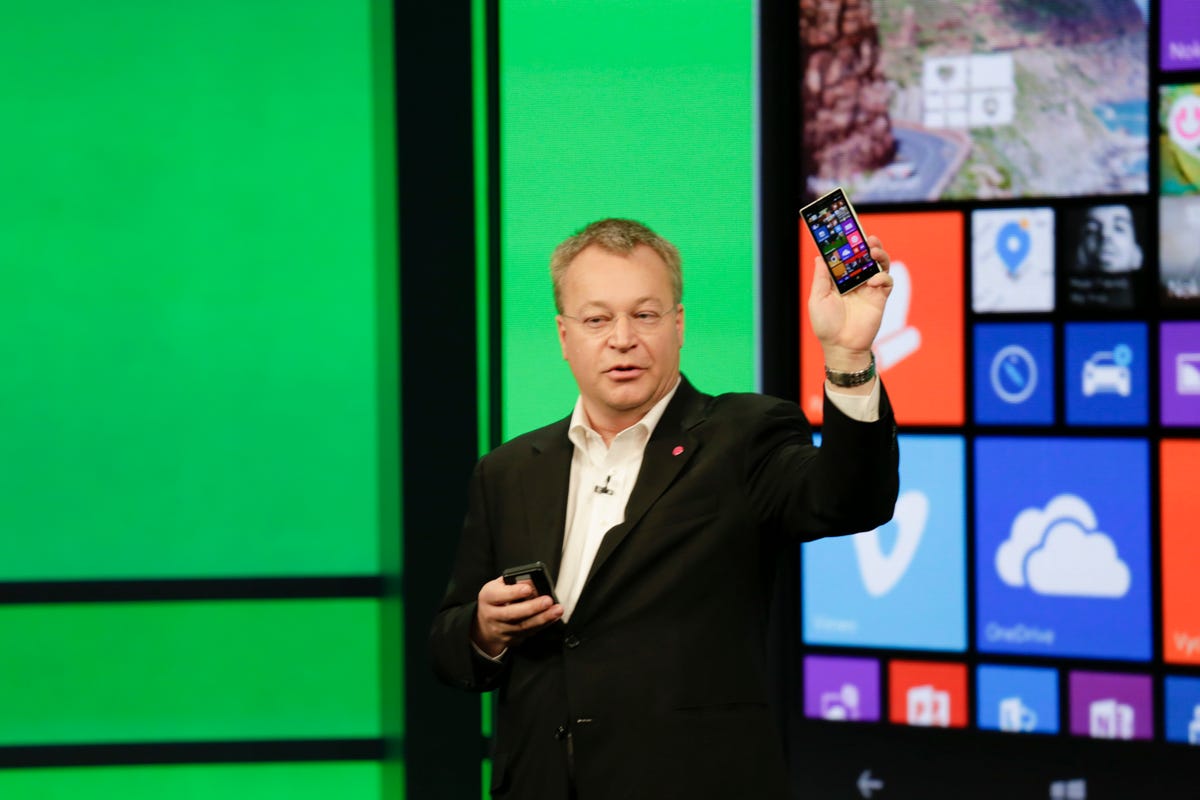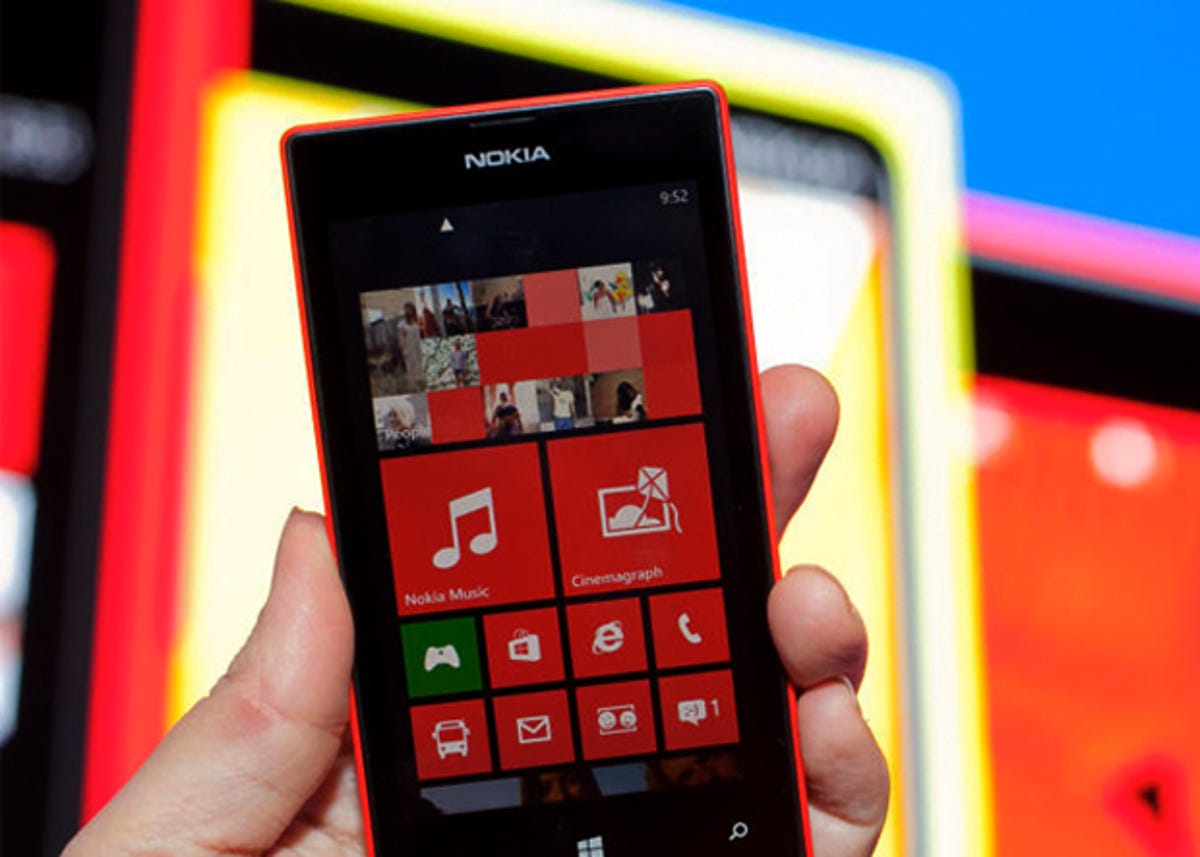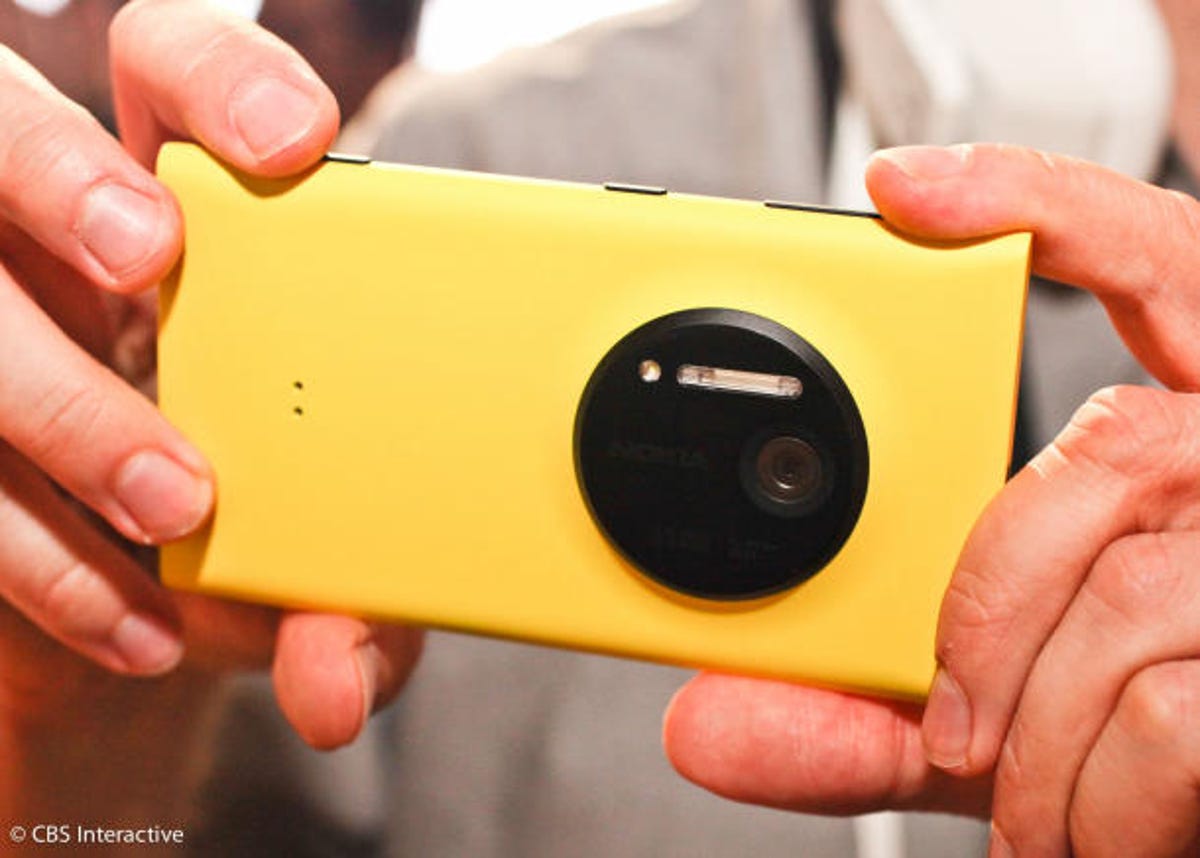
James Martin/CNET
SAN FRANCISCO — A Windows Phone device isn’t going to topple Apple’s iPhone 5 or Samsung’s Galaxy S5 anytime soon, and that’s just fine for Microsoft.
While Microsoft believes in a full range of devices, it doesn’t really have its eye on the market for premium smartphones. Instead, it’s targeting the faster growing demographic of consumers who are looking for more-affordable devices.
Related Links
- Nadella’s pitch to Microsoft developers: Stick with us
- Microsoft announces Windows Phone 8.1 update
- Microsoft unveils Cortana personal assistant for Windows Phone
- Nokia Lumia 635 coming to AT&T, T-Mobile, others
- Emerging markets: The smartphone battleground (Smartphones Unlocked)
Most of the phone-related news from the company’s Build developer conference on Wednesday had to do with making it easier for handset manufacturers to embrace the Windows world and create lower-cost products. The marquee announcement: eliminating the licensing fees for any device with a display that’s smaller than 9 inches.
“For partners, this makes it easier to bring more compelling devices to market,” Terry Myerson, executive vice president of the operating systems group at Microsoft, said in a blog post.
Microsoft is in effect sacrificing a part of its traditional revenue stream to ensure that more companies build Windows products, and that more people buy them. It’s a necessary move — particularly in the mobile world, where Windows Phone is a distant third behind Google’s Android and Apple’s iOS — and one the company hopes will break it out of its niche corner.
“They’re doing what it takes to be relevant,” said Avi Greengart, who covers consumer technology for research firm Current Analysis.
Shares recently rose 0.3 percent to $41.15 in pre-market trading this morning after staying relatively stable over the last few days of the conference. It peaked at $41.62 on Wednesday.
The move underscores the market shift away from the most-expensive smartphones — a segment that still garners most of the noise and attention — toward meeting the demands of consumers with more-constrained budgets. Indeed, industry observers see the emerging markets as the next key battleground for most handset makers.


James Martin/CNET
“It’s a statement of fact that a lot of the current share and expected growth is at the more affordable end of the spectrum,” Greg Sullivan, director of the Windows Phone unit at Microsoft, said in an interview with CNET.
Microsoft believes it offers a better experience when it comes to budget phones. The company has committed to upgrading every Windows Phone — old, new, cheap or premium — to Windows Phone 8.1, an upgrade that notably includes the virtual assistant Cortana.
“We have performed demonstrably better on those affordable devices, and Android is trying to catch up,” Sullivan said.
A Google spokesman wasn’t immediately available to respond.
Google has been looking to create a more consistent experience on both the high and low end with the introduction of Android 4.4, also known as KitKat. Many budget Android phones, however, still run on older versions of Android without hope of an upgrade. Motorola has a competitive budget device in the Moto G, priced at $179, and said it would continue to push the price levels up while maintaining quality, even under new parent Lenovo.
Apple’s strategy at the low end has been to sell its older phones, while pushing its iPhone 5C as a more wallet-friendly option. But with a $550 price tag for an unlocked iPhone 5C, Apple isn’t really interested in the same market (in comparison, the recently unveiled Lumia 630 starts at $159 unlocked).
‘A calculated risk’
Microsoft’s elimination of its licensing fee is a significant symbolic gesture, underscoring its aspirations to transform into a hardware and services company from purely a software provider.
But from a financial perspective, the impact will be negligible. Microsoft could lose $400 million to $500 million in revenue and 3 cents a share in earnings in fiscal 2015, estimates Cowen & Co. analyst Gregg Moskowitz. That would barely register for a company that generated $24.5 billion in revenue and earned 78 cents a share in the last fiscal quarter.
“It’s a calculated risk,” said Carolina Milanesi, an analyst at research firm Kantar. The idea is for customers to get hooked on Windows Phone and smaller Windows tablets, propelling sales of larger devices, from which Microsoft still collects a licensing fee.
Most of the licensing fees were coming from Nokia, and that’s a source of income that will disappear once Nokia’s devices and services business gets folded into Microsoft. The companies have said they expect to close the deal this month.
Nokia was responsible for 93 percent of all Windows Phone devices in the market last year, according to AdDuplex, which runs a cross-promotion network for Windows and Windows Phone apps.
Nokia says the decision to eliminate licensing fees is a positive for the platform.
“Anything that reduces friction for other (original equipment manufacturers) to participate in the ecosystem is a good thing,” Stephen Elop, head of the Nokia devices and services business, said in an interview with CNET. “From an ecosystem perspective, the more, the merrier.”


Sarah Tew/CNET
It’s no surprise that the best-selling Windows Phone isn’t one of the flashier flagship Nokia devices but the more wallet-friendly Lumia 520, followed by a number of other affordable Lumia devices. When Elop showed off the Lumia 630 and 635, AT&T and T-Mobile were quick to confirm that they’d be selling the Lumia 635.
The moves have so far attracted lower tier handset manufacturers, with many of them building phones in China, India, and Brazil. The hope is that once market share ticks up to a more respectable level, the larger handset manufacturers — many of whom are listed as partners — will take a more serious look at Windows Phone again.
Likewise, a higher share of the market will also attract more marquee developers, which continues to be a weakness with the platform. Elop said the Windows Phone app store was adding 500 apps a day. The OS ended last year with 3.2 percent of the market, compared with Android’s 78.4 percent share, according to Gartner.
Nokia Lumia 630 is colorful and comfy (Pictures)






Ultimately, getting more customers on board the Windows platform will allow Microsoft to sell more services. Myerson said hardware partners would be able to sell their products with a free one-year subscription to Office 365, potentially hooking customers into Microsoft Word or Excel early on. Down the line, customers may pay to use Skype, or run searches on Bing, which could generate ad revenue for the company.
“When you think about something like a platform like Windows and Windows Phone, there’s a broader sense of monetization,” Elop said.
Flagship as innovation engine
So if the flagship Windows Phone devices aren’t even selling that well, why even bother?
To Elop, a flagship device such as the Lumia 1020 means more than just simple unit sales. The investment in the camera technology that went into that phone ultimately meant better camera software and capabilities in its more affordable devices.
“If we had started here (pointing to the Lumia 630), then the imaging would be more akin to its competitors,” Elop said. “We believe strongly in investing in these products for the innovation.”


Sarah Tew/CNET
Elop, of course, said he was interested in driving sales in the high end as well.
“It’s absolutely part of our business imperative to be more successful with the high end,” he said.
But the halo effect from devices like the Lumia 1020 helps with the entire line’s reputation. To Microsoft, the Nokia effect has had broader reach.
“The association of high-quality imaging devices with Windows Phone helps everybody in the business,” Sullivan said.
Microsoft is hoping that good will — and some free software — will start turning some heads.



